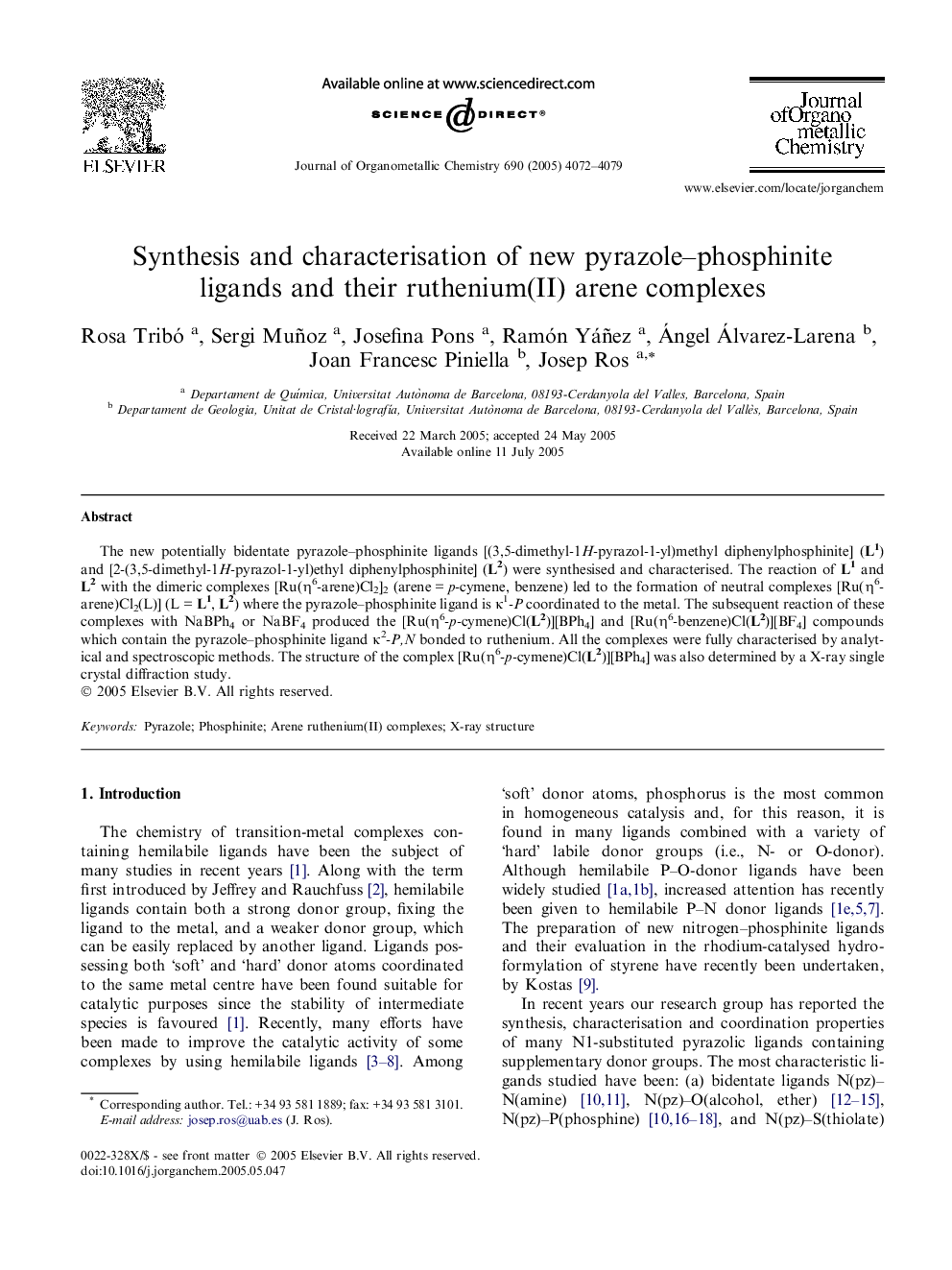| Article ID | Journal | Published Year | Pages | File Type |
|---|---|---|---|---|
| 1328674 | Journal of Organometallic Chemistry | 2005 | 8 Pages |
The new potentially bidentate pyrazole–phosphinite ligands [(3,5-dimethyl-1H-pyrazol-1-yl)methyl diphenylphosphinite] (L1) and [2-(3,5-dimethyl-1H-pyrazol-1-yl)ethyl diphenylphosphinite] (L2) were synthesised and characterised. The reaction of L1 and L2 with the dimeric complexes [Ru(η6-arene)Cl2]2 (arene = p-cymene, benzene) led to the formation of neutral complexes [Ru(η6-arene)Cl2(L)] (L = L1, L2) where the pyrazole–phosphinite ligand is κ1-P coordinated to the metal. The subsequent reaction of these complexes with NaBPh4 or NaBF4 produced the [Ru(η6-p-cymene)Cl(L2)][BPh4] and [Ru(η6-benzene)Cl(L2)][BF4] compounds which contain the pyrazole–phosphinite ligand κ2-P,N bonded to ruthenium. All the complexes were fully characterised by analytical and spectroscopic methods. The structure of the complex [Ru(η6-p-cymene)Cl(L2)][BPh4] was also determined by a X-ray single crystal diffraction study.
Graphical abstractNew potentially bidentate pyrazole–phosphinite ligands [(3,5-dimethyl-1H-pyrazol-1-yl)methyl diphenylphosphinite] (L1) and [2-(3,5-dimethyl-1H-pyrazol-1-yl)ethyl diphenylphosphinite] (L2) were synthesised and characterised. The reaction of [Ru(η6-arene)Cl2]2 (arene = p-cymene, benzene) with L1 and L2 led to the formation of neutral complexes [Ru(η6-arene)Cl2(L)] (L = L1, L2). The subsequent reaction with NaBPh4 and NaBF4 produced the [Ru(η6-p-cymene)Cl(L2)][BPh4] and [Ru(η6-benzene)Cl(L2)][BF4] compounds which contained the pyrazole–phosphinite ligand κ2-P,N bonded to ruthenium. The crystal structure of compound [Ru(η6-p-cymene)Cl(L2)][BPh4] was reported. Some preliminary catalytic tests involving the transfer hydrogenation of cyclohexanone were also described.Figure optionsDownload full-size imageDownload as PowerPoint slide
